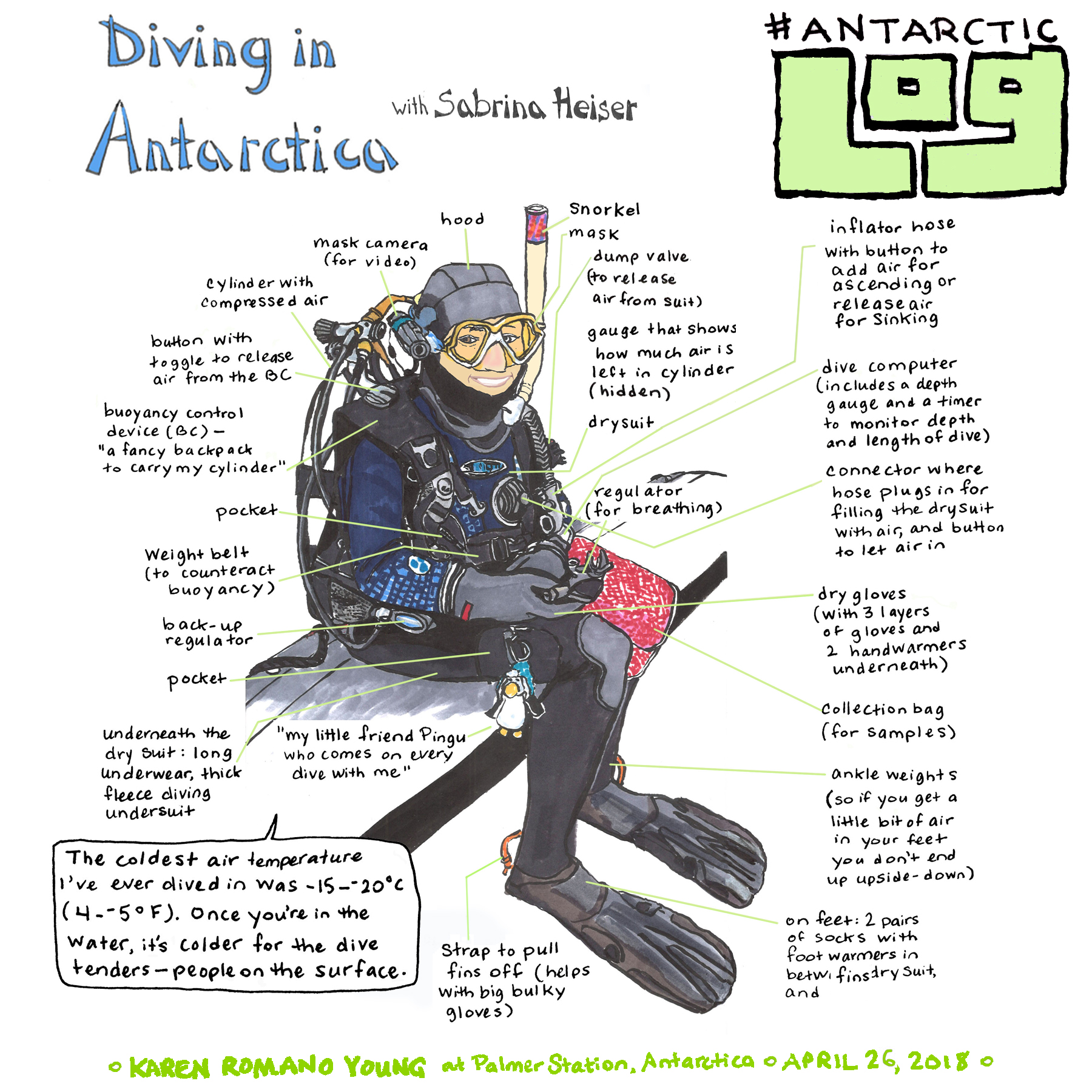26 March 2021
#AntarcticLog: How do we see what we can’t see?
Posted by Shane Hanlon
#AntarcticLog is a series of comics by Karen Romano Young. You can find the originals here.
More invisible stuff, you cry? What ELSE can comics show that’s tough to see?
A big part of my Antarctic Artists and Writers program project involved making the invisible visible through visual storytelling — which can mean all kinds of things, but in my case means comics.
I wound up my story of Dr. Peter Countway’s lab (he’s the Bigelow Laboratory for Ocean Sciences biologist with whom I came to Palmer Station Antarctica) with a look at the samples he’d be bringing home — water that had been:
- gathered at Station E, the farthest reach of the Palmer Station Long Term Ecological Research study area,
- incubated on shore in the Ecostat, which mimicked the conditions of Station E
- analyzed in the lab (with the help of filtering by yours truly)
- returned to the Bigelow Laboratory for further study
This comic shows what was in Pete’s suitcase as he headed home.

Meanwhile, my nose was sniffing around to see what else was happening at Palmer Station. There was plenty to see in the aquarium, and that clued me in to another invisible story: what the divers at Palmer Station were doing out there while their tenders sat shivering in a small boat at the icy sea surface, alert to the double threats of leopard seals and hypothermia.
How did they do it?
Biologist Sabrina Heiser, part of the University of Alabama at Birmingham team led by Dr. Chuck Amsler, modeled her dry suit for me, and walked me through the layers that made it possible for her to stay below for a freezing 30 minutes.

This wasn’t Sabrina’s first season on the ice — or her first Antarctic research station. This year she returned to Palmer to revisit devices she’d left on the seafloor — small beds on which she hoped plocamium seaweed would grow.

I think it’s fair to say I think about Palmer Station everyday — and, thanks to this souvenir created from Sabrina’s samples — of plomecarium and other algae preserved in resin. Like so much in Antarctica — this seaweed — and the researcher that dived for it — are special to me.

–Karen Romano Young is a writer, artist, deep-sea diver, and polar explorer. Follow her on Twitter & Instagram.


 The Plainspoken Scientist is the science communication blog of AGU’s Sharing Science program. With this blog, we wish to showcase creative and effective science communication via multiple mediums and modes.
The Plainspoken Scientist is the science communication blog of AGU’s Sharing Science program. With this blog, we wish to showcase creative and effective science communication via multiple mediums and modes.